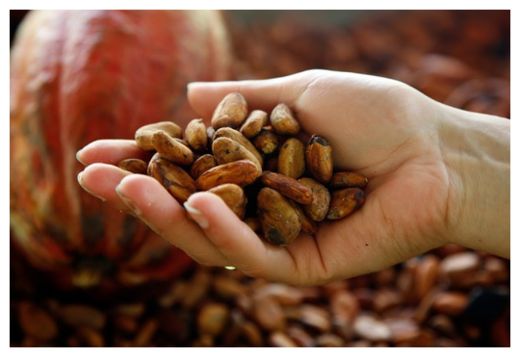
© piotreknik / Shutterstock
Archeologists have long known that
cacao was important to the ancient Mayans who used it to
make beverages and perform rituals, but some recently discovered evidence shows that these people added cacao to flavor their food as far back as 2,500 years ago.
Traces of chocolate that were found on plate fragments could be evidence of a Mayan precursor for modern Mexican dishes like mole, the chocolate-based sauce served with chicken or beef.
Earlier this week, Mexico's
National Institute of Anthropology and History announced the discovery, which was based on artifacts taken from the Paso del Macho archaeological site in Yucatan in 2001.
"This is the first time it has been found on a
plate used for serving food," archaeologist Tomas Gallareta said. "It is unlikely that it was ground there (on the plate), because for that they probably used metates (grinding stones)."
Fragments recovered from the site were tested by a joint team of scientists that included
experts at Millsaps College in Jackson, Mississippi.
The chemical tests revealed a "ratio of theobromine and caffeine compounds that provide a strong indicator of cacao usage," according to a statement from the college.
The findings establish another use of cacao beans by the pre-Hispanic Maya. Previous theories have speculated that the beans were primarily crushed and mixed them with liquid to create a beverage for that society's upper class.
"
These are certainly interesting results," John Henderson, a Cornell professor and expert on ancient chocolate who was not directly involved in the research, wrote in an email on Thursday.
He added that "the presence of cacao residues on plates is even more interesting ... the important thing is that it was on flat serving vessels and so presented or served in some other way than as a beverage."
"I think their inference that cacao was being used in a sauce is likely correct, though I can imagine other possibilities," he said, noting possible use "as a condiment or garnish."
The latest discovery is significant because it shows a new use for products of the
cacao tree, however it is not the oldest evidence of cacao products ever found. Sites to the west of the Yucatan and in Chiapas have yielded traces cacao-based food approximately 1,000 years older.
Cacao also played a vital role in
Mayan mythology. They believed it was discovered by the gods inside of a mountain along with a bounty of other foods. The Mayan culture also included an annual celebration of their cacao god, Ek Chuah, every April. The festival included ritual animal sacrifices, ceremonial offerings of cacao, and a gift exchange.
Throughout the millennia, use of cacao products remained popular with the peoples of modern day Mexico and Central America. The Aztecs were the first ones to introduce the bean's culinary and medicinal uses to European explorers, whose cultures quickly adopted these techniques. European demand for the beans became so strong; it eventually led the French to create cacao plantations in the Caribbean and the Spanish to establish them in the Philippines.

Reader Comments
to our Newsletter